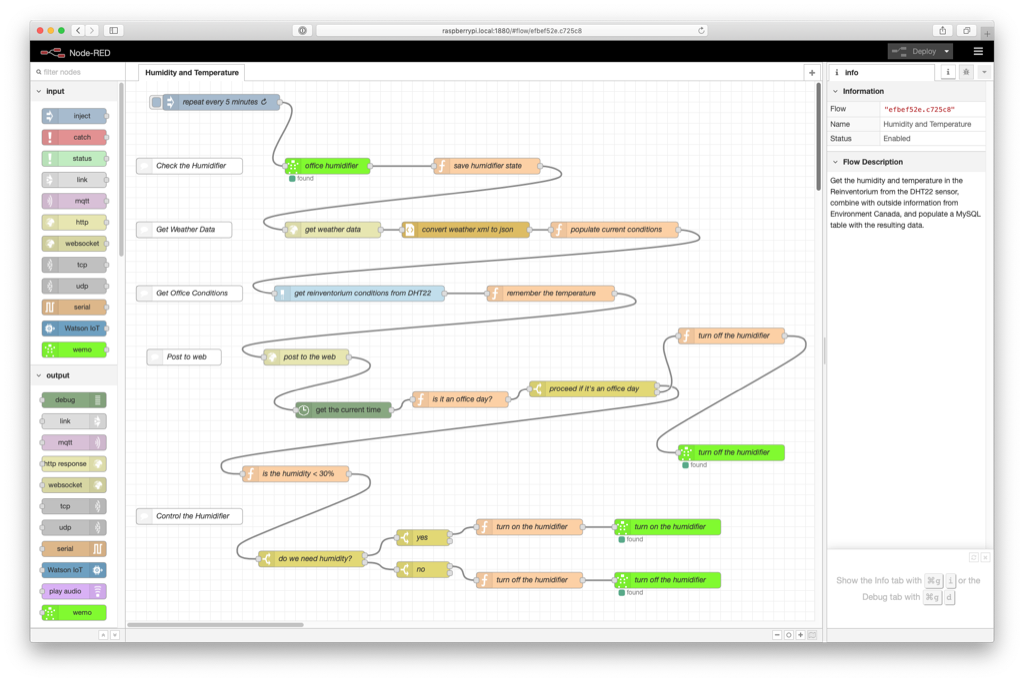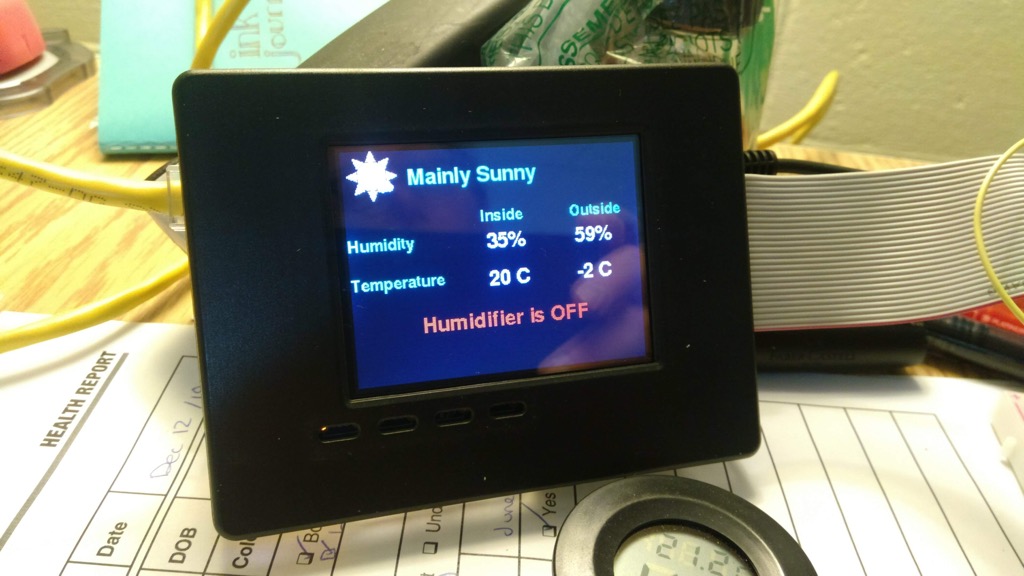I spent Sunday working out the details of this epic Node-RED flow, designed to turn my dumb (but effective) Venta Airwasher humidifier into a smart (and even more effective) humidifier.
The basics of this involve getting the office humidity reading from a DHT22 connected to a Raspberry Pi, figuring out if it’s an office day or not, and then deciding whether or not to turn the humidifier on or off (via a Wemo Mini WiFi Smart Plug).

You’ll note that I also grab Charlottetown weather information as part of the flow (freely available from Environment Canada as XML); because I log both the inside and outside temperature and humidity to a database, in addition to controlling the humidifier, the flow also gives me what I need to drive a PiTFT mounted on the same Raspberry Pi to display status information for both the inside and the outside (building upon the work helpfully documented here).

It was nice to have the prior art of previous year tinkering to build upon for this.
 I am
I am
Comments
After running this system for
After running this system for a week, I decided to experiment with leaving the humidifier on, set to the “2” fan setting, all the time, with hopes that rather than daily swings from 20% to 30% as the humidifier is on in the day and off at night, I can achieve higher humidity all the time.
Here’s what I’ll be comparing to (the last three days):
Add new comment